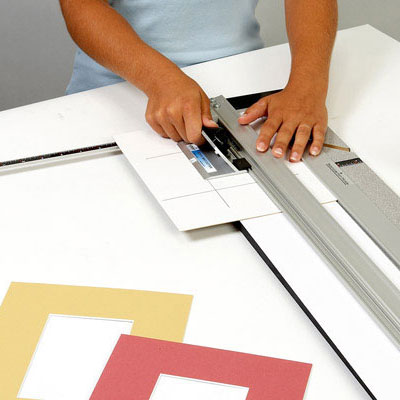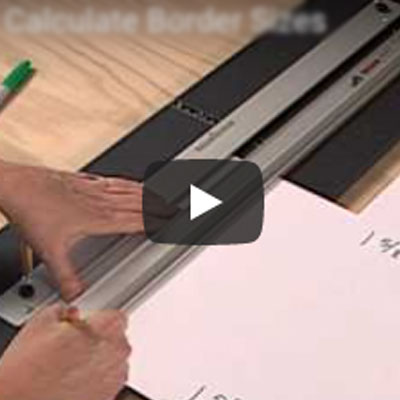"Hinge mounting" is framer-speak for mounting artwork by suspending it with tabs of tape. When performed using tapes designed for the purpose, hinge mounting is considered a sound archival method and can be used with one-of-a-kind artwork, such as original art on paper or limited-edition prints. Proper hinging tapes are acid free and have the quality of "reversibility" meaning that the stickiness of the adhesive can be reversed and the tape can be peeled cleanly off the artwork without damaging it.
The most common hinge mounting method is called the T-hinge. It is used when the window of the mat is slightly smaller than the artwork and the edges of the mat's window overlap the edges of the paper. A tab of tape is applied vertically at the top edge of the artwork about two inches from the corner. Half the tape is adhered to the back of the artwork and half to the back of the mat. A second tab of tape is applied vertically in the same manner about two inches from the opposite corner. Then both tabs of tape are crossed with additional tabs of tape for the purpose of reinforcing the hold of the first tabs against the back of the mat
Only two tabs of tape are employed against the artwork. The artwork is not taped along the full length of the top edge, nor is it taped at the sides or the bottom. It simply hangs in the window.
The reason for this is two-fold. First, you want to conserve the artwork; you want to minimize the amount of adhesive you put into contact with it. Second, it is the nature of paper that it "breathes". That is, it expands and contracts as it absorbs and releases moisture. Unless you are going to coat the paperwith adhesive (as
with dry mounting or PMA), you cannot prevent paper from breathing, and anything you do to restrict it from breathing will create buckles and waves.
In fact, most artwork that shows evidence of buckles and waves has been improperly mounted by taping it along the full length of the top edge or at the sides or bottom. Proper hinge mounting promotes breathing by taping the artwork at only two points.
When the mat is out of contact with the artwork, as is the case with a matted float or shadow box, you must mount to the mounting board instead of the mat. In this case you use a V-hinge.
Place the artwork on the mounting board and place the window mat over it. Arrange the artwork in the window of the mat, then remove the window mat. The artwork should be lying on the mounting board correctly positioned. Using a straightedge, mark guide lines at the corners of the
artwork so you can remove it and replace it in the proper position. Mark the full length of the top of the artwork.
Keeping the top edge of the artwork lined up with guideline, flip it over. Apply a tab of tape vertically about two inches from the corner so that half the tape is on the back of the artwork and half is on the mounting board.
Apply a second tab of tape in the same manner about two inches from the opposite corner. Then cross each tab of tape with a second tab of tape applied horizontally. This second tab of tape doesn't touch the artwork but serves to reinforce the hold of the first tab against the mounting board and provides an operable hinge point.
Turn the artwork back over again, concealing the tape. Place your mat over the artwork.












